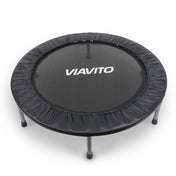Pilates is a comprehensive movement system that can be conducted on a mat, or via the use of resistance based ‘reformers’. Whilst it overlaps with yoga style exercises, its main focus is on the physical benefits of its postures.
What are the benefits of Pilates?
Flexibility
It's not only yoga that can help you with flexibility, but there is also an element of stretch in most Pilates positions, and the repeated movements can make you more supple when practiced regularly.
Weight loss
If you frequently do a ‘fitness style’ Pilates class you can benefit from a light cardiovascular workout, as well as an increase in lean body mass.
Full body workout
A good Pilates class targets all main muscle groups and includes aspects of cardio, strength and stability.
Strength and muscle building
A key focus in Pilates is on building core strength, by including a series of exercises that activate our deep transverse abdominal muscles. This makes our whole body move in a healthier way.
Spinal alignment
Having the correct alignment is essential for each movement to be conducted safely, this improves our posture off the mat, and can reduce back issues related to sedentary jobs.
Body awareness and control
Each exercise has a specific muscle focus, which helps us to tune into our bodies, move in a healthier way and use our core strength to control other movements.
Mental health
Pilates includes a focus on deep diaphragmatic breathing, which triggers the relaxation response. By building a stronger body, Pilates also helps us to create a more resilient mind.
Types of Pilates equipment:
Balls
Even the act of just sitting on a gym ball can start to stimulate your abdominal muscles, as they have to work hard to keep you balanced. Try swapping your office chair for one of these to improve your posture. Gym balls are also great for practicing a range of Pilates style exercises as they can really test your balance and strength.
Foam roller
A foam roller is designed to release areas of tension and tightness in the muscles and fascia (our connective tissue). Foam rollers are great for active individuals, or for those who sit a lot for work. Rollers can complement other exercises such as running and pilates, and can also support injury rehab.
Ring
The Pilates ring is great for building strength and stability, toning up and enhancing the effects of your mat or reformer exercises. You can do a range of effective full-body exercises with the Pilates ring, making it a useful tool for your home practice.
Balance board
A balance board is great for full body engagement, it can encourage joint strength, activates your stabilising muscles and improves your core strength- which in turn will help you to do key Pilates postures.
Mat
You will need a mat to conduct any floor-based Pilates exercises. Even if you intend to practice on a reformer, most teachers recommend you learn the basics in a mat-based practice.
Power loop
A Pilates power loop is ideal for anyone wanting to increase strength, improve muscle stability and up-level their workout.
Other things to consider:
Size of mat
As well as the thickness, make sure your mat is long enough for your body. Most good quality mats are ‘one size fits all’, however, some of the camping style mats can be too short for some bodies.
Portable
Some mats already come with a carry strap. This is an easy way to transport your mat, although it doesn’t protect it from the weather if you take it outside.
Material
Mats made from plastic tend to be ‘stickier’ which can aid your practice, or you can opt for natural rubber which provides more cushioning for your joints.
Texture
A smooth mat can be nicer to practice on, but make sure the surface is sticky enough to keep you in place
Grip
Small ridges in your mat can make it easier for you to grip.
Sponginess
You want to feel comfortable, without the mat being so soft that you can’t keep your balance
Colour
Bear in mind that you will spend a lot of time looking at your mat, so make sure you are happy with your colour choice
Eco-friendly
By choosing a mat made from natural fibres, or which can be recycled, you will be supporting the environment
Warranty
You want to be really happy with your mat, as hopefully, you will use it a lot, so check to see if there is a 14-day money-back guarantee system in place before you order.
Your budget
Obviously, you don’t want to overstretch your budget when buying a mat, but remember that choosing a better quality will keep your mat working well, for longer.
Pilates mat maintenance
Washing machine
Check your mat, as some can only be hand-washed, but most can be washed on a gentle, cold water cycle. Skip the dryer though.
Hand wash
An easy way to keep your mat in good condition is to hand wash after each use. Simply fill a spray bottle with some water and a few drops of natural soap, and use a microfiber cloth to clean gently.

